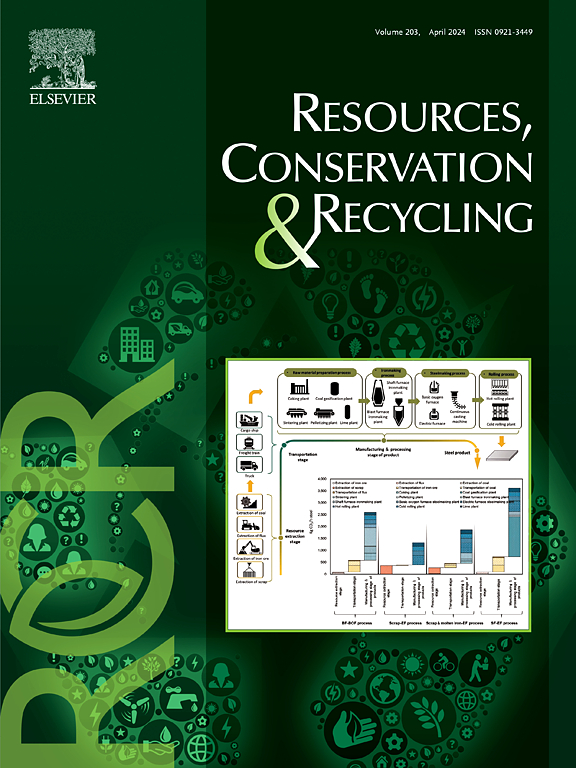关键金属的供应可能会限制中国在氢气生产方面的低碳转型
IF 10.9
1区 环境科学与生态学
Q1 ENGINEERING, ENVIRONMENTAL
引用次数: 0
摘要
关键金属的供应可能会限制氢生产的低碳转型,但中国的脆弱性仍未得到充分发掘。本研究评估了与水电解制氢有关的十种关键金属的供应风险和回收潜力。研究结果表明,铂、铱(用于电解)和锑(用于光伏发电)面临着很高的供应风险。未来40年,对这些金属的累计需求可能分别达到当前年消费量的25% - 90%、60% - 200%和13-49倍。2040年后,通过回收退役金属可以缓解供应风险,二手金属可能满足钛、铂和铱近50%的年需求。更激进的转变可能会加强金属需求的“倒u”趋势,并通过增加退役金属供应和减少新装机容量的需求来促进二次金属的使用。中国应加强政策引导和国际合作,缓解供给风险。本文章由计算机程序翻译,如有差异,请以英文原文为准。

The supply of critical metals could constrain China's low-carbon transition in hydrogen production
The supply of critical metals could constrain hydrogen production's low-carbon transition, yet China's vulnerability remains underexplored. This study evaluates supply risks and recycling potential for ten critical metals related to hydrogen produced via water electrolysis. Findings show that platinum and iridium (for electrolysis) and antimony (for photovoltaics) face high supply risks. Over the next 40 years, the cumulative demand for these metals could reach 25 %–90 %, 60 %–200 %, and 13–49 times their current annual consumption, respectively. The supply risks could be alleviated after 2040 through the recycling of retired metals, with secondary metals potentially meeting nearly 50 % of the annual demand for titanium, platinum, and iridium. A more radical transition could reinforce the “inverted-U” trend in metal demand and boost secondary metal use by increasing retired metal supply and reducing demand for newly installed capacity. China should strengthen policy guidance and international collaboration to alleviate the supply risks.
求助全文
通过发布文献求助,成功后即可免费获取论文全文。
去求助
来源期刊

Resources Conservation and Recycling
环境科学-工程:环境
CiteScore
22.90
自引率
6.10%
发文量
625
审稿时长
23 days
期刊介绍:
The journal Resources, Conservation & Recycling welcomes contributions from research, which consider sustainable management and conservation of resources. The journal prioritizes understanding the transformation processes crucial for transitioning toward more sustainable production and consumption systems. It highlights technological, economic, institutional, and policy aspects related to specific resource management practices such as conservation, recycling, and resource substitution, as well as broader strategies like improving resource productivity and restructuring production and consumption patterns.
Contributions may address regional, national, or international scales and can range from individual resources or technologies to entire sectors or systems. Authors are encouraged to explore scientific and methodological issues alongside practical, environmental, and economic implications. However, manuscripts focusing solely on laboratory experiments without discussing their broader implications will not be considered for publication in the journal.
 求助内容:
求助内容: 应助结果提醒方式:
应助结果提醒方式:


